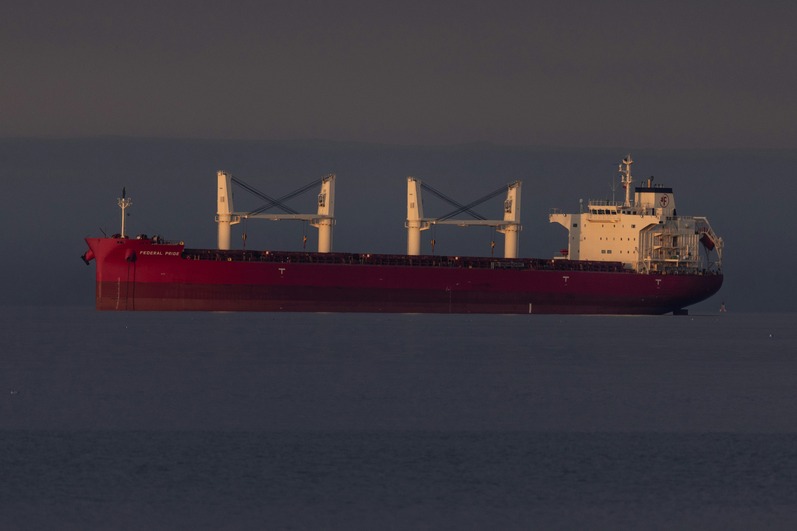
Breakbulk refers to the transportation of cargo that is too large, heavy, or complex to fit into standard shipping containers. This type of cargo is transported in individual pieces rather than as a single shipment, making it a distinct category in the logistics and shipping industry. Breakbulk cargo can include items such as machinery, large industrial equipment, construction materials, and project cargo, among others.
Below is a detailed overview of breakbulk shipping, including its key characteristics, services, handling processes, advantages, challenges, and market applications.
Breakbulk shipping involves the movement of goods that are not packaged in containers, allowing for the transportation of oversized or heavy items. This method requires specialized handling and logistics to ensure the safe and efficient transport of such cargo.
Key Characteristics:
Individual Pieces: Breakbulk cargo consists of separate pieces that need to be loaded and unloaded individually.
Heavy and Oversized Items: It often includes items that exceed the dimensions or weight limits of standard containers.
Variety of Shapes and Sizes: The cargo can come in various shapes and sizes, requiring customized loading and securing solutions.
The following are the main services provided under breakbulk shipping:
A. Transportation
The core service of breakbulk shipping involves the actual transportation of oversized or heavy cargo.
Key Services:
Heavy Lift Transportation: Specialized transport solutions designed for moving particularly heavy or oversized cargo, often using cranes and specialized trailers.
Multi-modal Transport Solutions: Coordinating the movement of breakbulk cargo across various transport modes, such as road, rail, and sea.
B. Cargo Handling
Handling breakbulk cargo requires specialized equipment and trained personnel.
Key Services:
Loading and Unloading Services: Utilizing cranes, forklifts, and other equipment to load and unload cargo safely at ports, terminals, and warehouses.
Rigging and Securing: Employing rigging techniques to secure heavy and oversized items during transport to prevent movement or damage.
C. Customs Clearance
Customs clearance is critical for the smooth movement of breakbulk cargo across international borders.
Key Services:
Customs Brokerage: Acting as intermediaries to facilitate customs clearance, preparing necessary documentation, and ensuring compliance with regulations.
Tariff and Duty Management: Calculating applicable tariffs and duties for shipments, ensuring all fees are accounted for and paid.
D. Project Logistics
Breakbulk shipping is often part of larger project logistics initiatives, particularly for industries such as construction and energy.
Key Services:
Project Cargo Management: Providing comprehensive logistics solutions for large projects, coordinating all aspects of transport, handling, and delivery.
Site Management: Managing the logistics of delivering breakbulk cargo to job sites, ensuring timely and safe arrival.
Breakbulk shipping offers several advantages that can benefit specific industries and cargo types.
Flexibility: Breakbulk shipping can accommodate a wide range of cargo sizes and shapes, making it suitable for specialized shipments.
Customized Solutions: The ability to tailor transport and handling solutions based on the unique needs of each shipment.
Cost Efficiency for Large Cargo: For very large or heavy shipments, breakbulk can often be more cost-effective than using multiple containers.
While breakbulk shipping offers unique advantages, it also presents several challenges.
Key Challenges:
Handling Complexity: The need for specialized equipment and skilled personnel to handle oversized and heavy items.
Longer Loading and Unloading Times: Loading and unloading breakbulk cargo can be time-consuming, potentially leading to delays.
Regulatory Compliance: Navigating customs regulations and requirements for oversized or heavy cargo can complicate logistics.
Increased Risk of Damage: The individual handling of each piece increases the risk of damage during transport.
Breakbulk shipping is widely used across various industries, including:
Construction: Transporting heavy machinery, structural components, and materials needed for construction projects.
Energy: Moving large equipment and components for energy projects, such as wind turbines or oil rigs.
Manufacturing: Shipping large machinery or specialized equipment for manufacturing processes.
Marine and Offshore: Providing logistics support for marine and offshore operations, including the transport of vessels or equipment.
6. Conclusion
Breakbulk shipping is a vital component of the logistics and shipping industry, enabling the efficient transport of oversized and heavy cargo that cannot be accommodated in standard containers. By offering specialized services in transportation, cargo handling, customs clearance, and project logistics, breakbulk providers can meet the unique needs of various industries. While there are challenges associated with this mode of shipping, the flexibility and customized solutions it offers make it an essential option for businesses engaged in global trade and specialized projects.
Out of Gauge (OOG) and Project Cargo refer to specialized logistics categories within the shipping and transportation industry. Both involve the handling of oversized or heavy cargo that cannot be transported using standard shipping containers. However, they have distinct characteristics and requirements. Below is a detailed overview of both concepts, including their definitions, key services, handling processes, advantages, challenges, and market applications.
Out of Gauge (OOG) Cargo
1. Definition and Overview
Out of Gauge (OOG) cargo refers to shipments that exceed the standard dimensions of shipping containers, either in height, width, or length. This type of cargo often includes large industrial equipment, machinery, and oversized materials.
2. Key Characteristics
Exceeds Container Limits: OOG cargo is defined by its size, being larger than the maximum allowable dimensions for standard containers.
Varied Shapes and Sizes: OOG shipments can come in various forms, including long items, heavy equipment, and unusual shapes.
3. Key Services Offered
A. Transportation
Specialized Equipment: Using flat-rack containers, open-top containers, or breakbulk shipping for transportation.
Multi-modal Solutions: Combining road, rail, and sea transport to optimize the shipping process.
B. Cargo Handling
Loading and Unloading Services: Utilizing cranes, specialized forklifts, and rigging to handle oversized cargo safely.